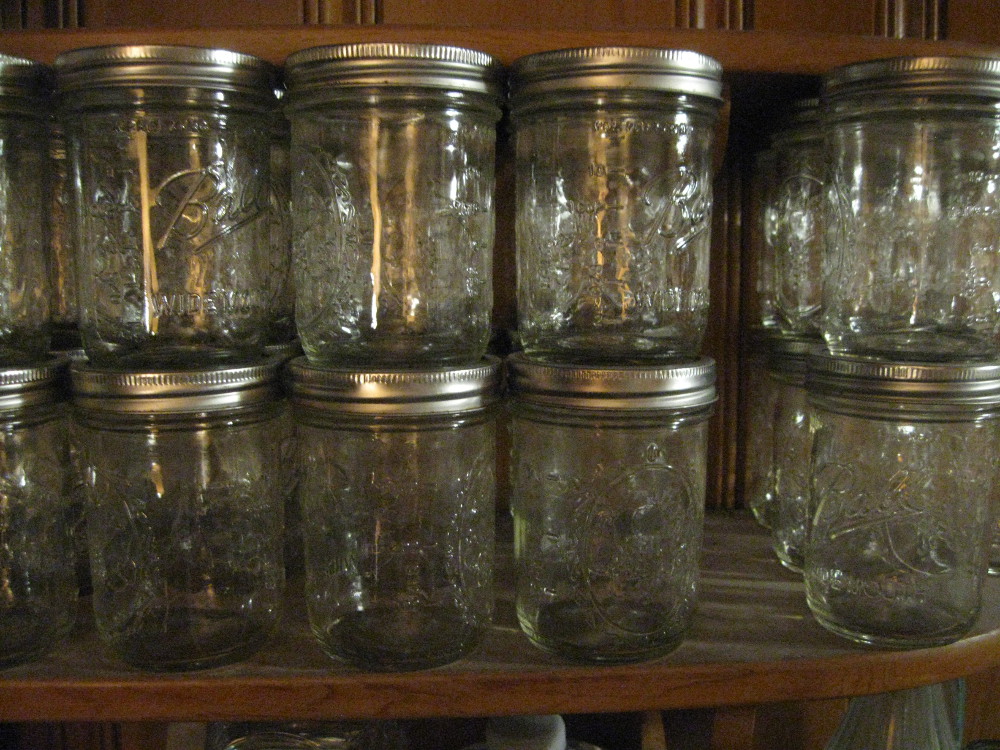Since all the weddings I was going to work on this summer have been postponed until next year, I want to share some of my other interests with you. First up, food storage! If you’re interested in eating local food (and I am), storing the summer’s abundance is one way to make sure you have the best food all winter. It also strengthens the local food system and helps reduce greenhouse gases.
It is a little-known fact that a lot of vegetable farmers grow more food than they can sell, and much of that abundance goes back into their compost piles, instead of being eaten. But we can all save a little of it for ourselves, maybe with enough to share with our neighbors.
For the last 7 or 8 years, I’ve been storing food all summer and eating it in the winter. When I started doing it, I had no idea how much work it was going to be. If you’re thinking of doing the same, I just want you to know up front that it can easily take over all of your summer weekends. I think it’s worth it!
STRATEGIES
My main strategies for storing food in the winter are freezing, pickling, root vegetable storage, canning, and a little bit of dehydrating. Because I’m not an expert on canning, I’ll share with you what I know about the other four strategies. Today, we’ll look at freezing.
The way I choose what to store is by paying close attention not only to what is in season, but to what there is an abundance of. If you see that a farmer has a sale on something, it is probably because they have a lot of it. I buy whatever is abundant and then preserve it. In the spring, it might be spinach or asparagus. Right now, it’s zucchini and tomatoes. In October, it could be turnips or rutabagas.
I also spend a lot of time talking to farmers at the market, and learning from them what they have a lot of and what they expect to have a lot of in the near future so I can plan my preserving projects.
Freezing is probably the easiest thing to start with.
What you need:
- Equipment for basic cooking
- Containers for freezing
- Freezer space
You can freeze almost anything, if you put your mind to it. Some things come out better than others, but the freezer is your friend. And the internet is also your friend. If I’m not sure how to freeze something (like, say, mashed potatoes the year I had a big batch of potatoes that didn’t survive in storage), someone has a blog post about it somewhere.
For the most part, you want to freeze only produce that has been cooked, whether lightly or thoroughly. There are exceptions, such as small berries that don’t lose much quality when they are frozen fresh. I also freeze cherry tomatoes and fresh peppers without freezing. You probably will want to cook any food you freeze fresh, as the texture does degrade.
You can make big batches of food that includes produce and freeze that, or you can freeze batches of individual kinds of produce, which is mostly what I do. I also freeze fruit sauces (apple sauce, etc.) if I don’t can them.
I like to steam vegetables in batches very lightly before I freeze them so that they come out as fresh as possible. It is necessary to cook them at least a little to prevent the cell walls of the fruit or vegetable from breaking apart when the water in them freezes. Frozen raw vegetables generally have a terrible texture. If you prefer, you can blanch vegetables (dip them briefly in boiling water) or cook them with a little water in the microwave.
Cook them (by whatever method you choose) for a minute or two until they just start to look cooked (green vegetables turn bright green), put them immediately into ice water to cool them, and drain them thoroughly. Then pack them as tightly as possible into containers (squeezing out as much air and water as possible), label them with the contents and the date, and put them in the freezer. It really is that simple.
There are some vegetables that I cook thoroughly before storing. Two of my favorites are eggplant and cauliflower. I roast them in the oven and then freeze them. Those two seem to hold up very well to that kind of treatment. Less robust vegetables seem to fare better with lighter cooking.
I also have a list posted on the outside of the fridge that tells me how much of what kinds of vegetables and fruit I have in the freezer, so I can be sure to store a nice mix of things, and so that I know how much I have. But maybe that’s just my love of spread sheets showing. If I can’t plan things, at least I can use my spread sheet skills to keep track of my fruits and vegetables!
A lot of people like to freeze food in plastic bags. I’m skeptical of plastic, though, especially at extreme temperatures, so I freeze everything in glass jars. If you are going to use glass, you can use any kind of glass jar, but don’t use anything larger than a one-pint jar. The larger jars have a tendency to crack in the freezer. (Ask me how I know!) Plastic bags do let you fit a lot more in your freezer, though, so you’ll have to do your own calculus about what works for you. Whatever you choose to do, be creative and see how much you can fit in your freezer. It really is worth the trouble.
If you start now, you can still put tomatoes, greens, broccoli, cauliflower, beans, and a whole lot of other vegetables into your freezer before the end of farmers market season. Set aside a couple of hours on the day you buy your fruit and vegetables, and get some of it in the freezer. When winter comes, you’ll feel very well prepared.
I’ll be doing a Zoom workshop on this subject for Wild Onion Market, my local food co-op start-up, on Tuesday, September 29 at 7:00 pm CDT. You’re invited to join in: https://us02web.zoom.us/j/89593190791.


Recent Comments